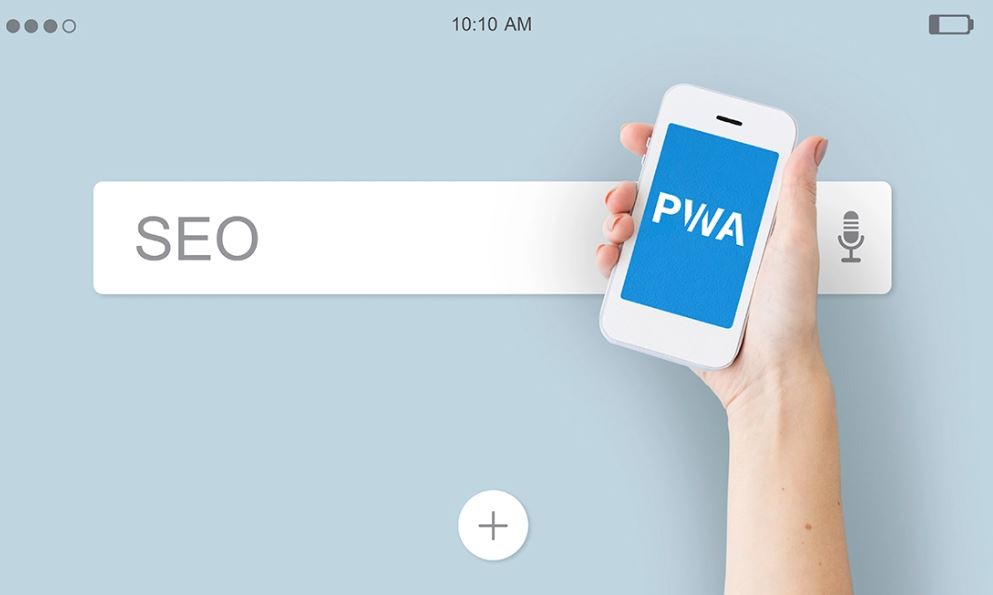As the internet continues to evolve, so do the strategies for optimizing a website or web application’s visibility in search. Progressive Web Apps (PWAs) are no exception – now more than ever, PWA developers must think critically about how to best employ SEO technical practices to ensure their app stands out from competitors and ranks favorably on popular search engine websites.
In this blog post, we’ll explore what exactly PWAs are as well as offer key tips when it comes to utilizing PWA SEO tools and tactics across your application’s overall design architecture. Let’s get started!
Table of Contents
Progressive Web Apps and SEO: Why is PWA SEO a concern?
Progressive Web Apps provide a plethora of advantages, but in order to stay competitive, you still need to make sure that your website is set up technically.
Why then do we observe a large number of companies who are interested in Progressive Web Apps putting off using the technology? The cause is a combination of uncertainty about how SEO for Progressive Web Apps functions is important and concern about altering what has previously been shown to be effective.
The field of SEO optimization is one of ongoing evolution and reality adaptation. Even if your website now has a flawless SEO score, the status quo might alter at any time due to rapid changes in search engine algorithms or emerging trends like the advent of mobile-first indexing.

The setting of technical SEO is a difficult operation that frequently causes website owners problems. However, the process is the same for any website, PWA or not, and ultimately doesn’t sound that tough at all when it comes to the fundamentals of technical PWA SEO.
You must ensure that all the content you wish to present in SERPs is appropriately formatted, labeled, and accessible to search engines in order for your website to appear correctly in SERPs. At the same time, you must prevent search engines from accessing any aspects that shouldn’t be shown.
Progressive Web Apps SEO: How do PWAs work with SEO?
Progressive Web Apps are different from “conventional” HTML-based web pages. This gave rise to the misconception that search engines can’t index PWAs. But that’s not the case.
Progressive Web Apps may be indexed just like any other web page, but different strategies will need to be employed to make sure the search engines can see and interpret the content of your website.
Client-Side vs. Server-Side Rendering
The majority of websites typically “pre-boot” everything on the server side using Server-Side Rendering, or SSR. You transmit a rendered version of the page from the server to the user’s browser whenever they request it.
Although it is simple, this strategy has several drawbacks. Yes, you will load your first meaningful paint quickly, but every time a user switches pages, the complete HTML will need to be loaded. This might be uncomfortable, especially if you have a poor internet connection.
Client-Side Rendering, often known as CSR, is an alternate technique used by Progressive Web Apps and other Javascript-based websites. This method uses JavaScript to render information in the client’s browser.
The user only receives a tiny string of data along with a JavaScript file that will request and render the necessary parts of the page in the client’s browser, resulting in a noticeably faster website page load time than if an entire HTML document were sent from the server each time a user switched pages.
JavaScript can be indexed by Google
Things are actually more difficult than that. While supporting the technology and making great strides in Googlebot’s capacity to display JavaScript, Google acknowledges that there are still processing problems with JS and that not all search engine crawlers can process it correctly or instantly.
Yes, speed is also another crucial factor in this case. It takes an extra step that is not necessary for standard HTML content to verify that the JavaScript-based website is being crawled correctly.
For JS pages, the procedure is as follows: there are two waves of indexing. A Googlebot crawls your page’s source code in the first wave and indexes all of the visible (non-JavaScript) content.

The Rendering Stage is an additional step that is necessary since JavaScript websites often don’t contain material that can be seen in the source code and Google has nothing to index.
Googlebot will return to your website during the rendering phase to execute the JavaScript code, making the actual content of your page available for crawling and ultimately adding it to the index.
Due to the additional resources that this procedure demands from Google, you will have to wait longer for your JavaScript content to show up on the search engine’s result pages.
There is considerable doubt as a result of all of this. Merchants must strike a balance between enhancing the user experience for their visitors and ensuring that search engines can effectively carry out their duties.
Are Progressive Web Apps bad for SEO?
When considering PWA, this is one of the first concerns that pop into your head. This issue dates back to a time when search bots couldn’t understand JavaScript. Although it’s not ideal, thankfully that period has long since passed and the main search engines can render JavaScript content without issue.
The way that search engines index PWA websites is a major source of misunderstanding. Let’s examine how Google crawls websites to have a better understanding of this. A website is indexed by Googlebot twice throughout the crawling process. Without rendering JavaScript, it first pulls the content from the HTML source. It renders JavaScript in the second stage. The website will be indexed in the first stage if the content is not rendered by JavaScript.
However, it can take a few days or even a few weeks before the website achieves the second phase when it is indexed if JavaScript is required to render its content. Time spent indexing a webpage may be a problem for some. Thankfully, there are solutions for it.
Things that make PWA SEO great
Google produced a Progressive Web Apps checklist. It outlines the characteristics a PWA needs to have, including:
- Stay quick and load quickly
- Operate in all browsers
- Be responsive
- Apply HTTPS

These guidelines don’t only apply to PWA. To be at the top of the SEO game, every website should adhere to these guidelines. Consider it recommended practice to incorporate the aforementioned characteristics into your project while creating a PWA. After putting them into practice, you may concentrate more on producing excellent content, using HTML tags correctly, using keywords, and other crucial elements that affect your Google ranking.
When you develop a PWA, you are enhancing the user experience. That will encourage customers to stay on your website longer and return more frequently, which is important for SEO.
PWA SEO: Content Rendering
One of the most critical SEO components is content. Google gives better rankings to results that are more important to consumers’ searches. Making a decision on how to present content to users is essential when creating a Progressive Web App (and bots).
We will examine several rendering strategies in this section and see how they impact indexing.
Server-Side Rendering (SSR)
In the past, SSR was the only method to get indexed because bots had trouble indexing webpages built using JavaScript. Even if this is no longer the case, providing the contents in this manner is still desirable.
The website’s content is rendered on the servers in SSR, as the name implies. As a result, every time a request is sent, a fully-rendered page containing text, graphics, and other elements is returned. Users and search engines will both see the same version as a result. As a result, a bot will index the page during the initial step of indexing.
Because a client doesn’t have to wait for JavaScript to render the information, SSR often aids in quick loading. Hosting larger JavaScript-dependent pages, however, could be more expensive. Modern JavaScript frameworks don’t render in this manner by default either. Even if the majority of them include options for Server-Side Rendering, certain libraries might not be.

Client-Side Rendering (CSR)
In CSR, the content is presented right in the browser. The client’s capacity to process JavaScript is crucial for the CSR website. SSR is more expensive to host, and because users don’t have to wait for the server to respond, client-side rendered apps frequently feel quicker when switching between pages.
There are some drawbacks even if it could appear amazing. On older or less powerful workstations or mobile devices, client-side rendered websites could load more slowly. CSR also brings up issues with SEO. The same webpage won’t appear to real people and bots.
Because the first wave of indexing search bots only scans static HTML, they won’t be able to index CSR because they will just see a blank page. The bots will finally comprehend the content correctly since they process JavaScript in the second wave. However, this will take days or perhaps more time. This might be a major issue for websites with a lot of pages.
The pages that are completely rendered on the client side are not ideal for PWA, even if indexing time is not a concern for your project. Any browser should be able to use a Progressive Web App, even one with JavaScript disabled. Bots shouldn’t see a blank page since the primary functionality should be implemented entirely in HTML and supplemented with JavaScript. This brings up the third rendering kind.
Hybrid Rendering
The term Hybrid Rendering refers to a system that combines SSR and CSR. In this method, the first view is the same for users and bots. Therefore, the static HTML is served when users access the page. The bots can easily index it, and it is also incredibly quick. After the initial render for most visitors, JavaScript takes over, rendering the website on the client side for the remainder of their stay.
Hybrid rendering has a quick loading time and gives users a quick surfing experience. It combines the benefits of SSR and CSR in one process. Google also suggests it as a possible option.
It does have some negatives, though. Hydration ranks among them. Without getting too technical, hydration is the process that transforms a static HTML web page into a dynamic one. Have you ever come across a page that appears to be loaded but doesn’t respond to clicks? That was most likely due to dehydration. However, it will need some effort and the use of cutting-edge hydration techniques to accomplish the Hybrid Rendering successfully.
Best SEO Technical Practices for a Progressive Web App
- Make your content crawlable by using authentic URLs rather than hash fragments and according to PWA SEO URL best practices, such as including keywords and keeping URLs brief.
- Employ Mobile First Responsive design: Since Google and everyone else prioritizes mobile devices, you ought to do the same. PWAs should excel on mobile first before focusing on desktop since that is where they were built to shine.
- Be safe: 80% of the web currently utilizes HTTPS. If your website doesn’t already support HTTPS, move right away.
- Use Progressive Enhancement: While service personnel is excellent, PWAs make use of this technique. This indicates that they ought to perform well even if the browser does not support cutting-edge features, such as a search engine spider.
- Test using Search Console: Use the Fetch as Google function to test how Google understands your sites.
- Offer a sitemap: Make sure to add a sitemap to your website and register it in Google Search Console. This is the first method Google employs to determine the number of pages on your website.
- Check Page Speed: Google tracks the loading times of all pages. You ought to. To determine your time to first interaction—the important page performance statistic used by Google to gauge page speed—use WebPageTest and Lighthouse.

In Conclusion
A Progressive Web Application (PWA) is an effective way to ensure SEO best practices are applied to your website. Mobilizing your content and making it available offline positions you better in search engine rankings. Additionally, taking advantage of PWA features like implementing Service Workers, defining meta tags and URLs, and providing rich media can help improve your chances of earning higher visibility online.
Whenever you develop a PWA-enabled website or require optimizing assistance for one, our team is here to help. Contact us with any inquiries or assistance needs for PWA and SEO best practices today.
The amount of time required to create an immersive user experience by optimizing a PWA SEO should not be underestimated but the reward—both in terms of user engagement as well as enhanced ranking—makes the effort worth it. Most importantly, PWAs offer infinite possibilities for you to enhance your site’s visibility—it’s all a matter of how much energy you put into SEO optimization strategies! So why wait? Clearly define ways to optimize your progressive web application today!











